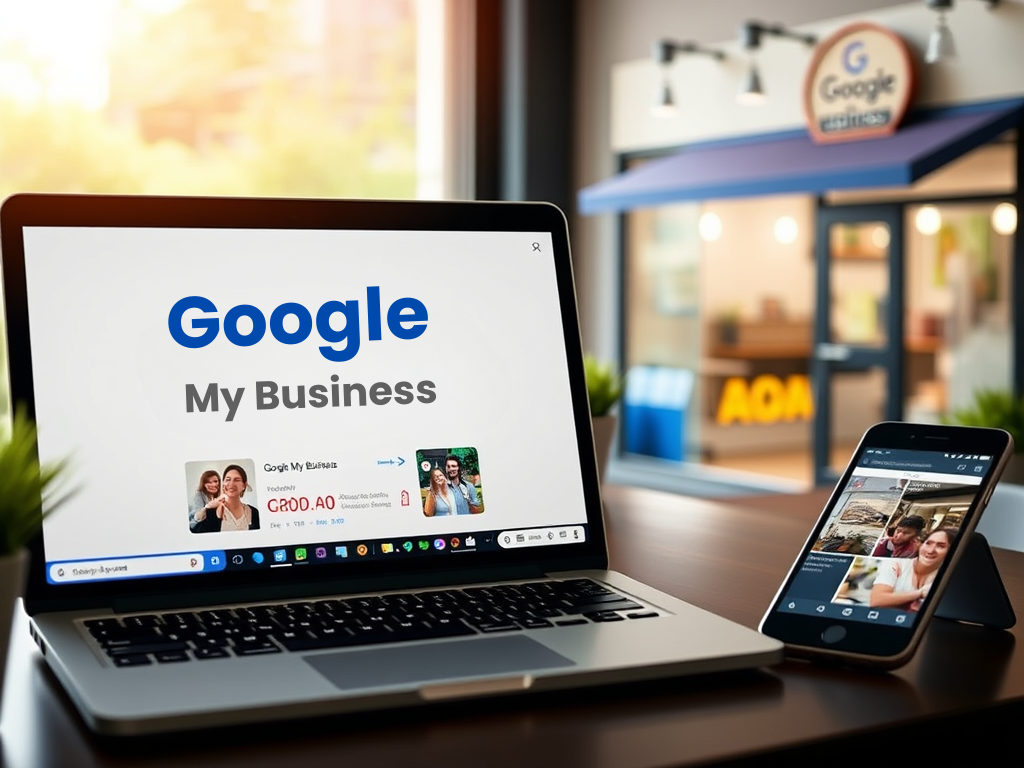Address
9, Oduyemi Street, Anifowoshe Ikeja, Lagos State.
Work Hours
Monday to Friday: 9AM - 6PM
Weekend: 10AM - 6PM
Online: 24/7
Address
9, Oduyemi Street, Anifowoshe Ikeja, Lagos State.
Work Hours
Monday to Friday: 9AM - 6PM
Weekend: 10AM - 6PM
Online: 24/7

In today’s digital age, having a robust online presence is crucial for small businesses. But what happens when your potential customers are just around the corner and not online? This is where Google My Business (GMB) comes into play. It serves as a bridge between your online business identity and your physical presence in the community. This powerful tool can significantly enhance your visibility both in the virtual and physical realms. In this guide, we’ll walk you through how to make the most of Google My Business for small businesses, using a blend of online and offline strategies.
Introduction
With over 90% of global internet searches conducted through Google, having your business listed on Google My Business is a no-brainer. According to a study by BrightLocal, 64% of consumers have used Google My Business to find contact details for a local business. This platform not only boosts your online visibility but also enhances your credibility in the eyes of potential customers.
But how do you stand out in a sea of listings? How do you ensure that your business not only attracts online traffic but also foot traffic? This comprehensive guide will provide you with actionable steps to optimize your Google My Business listing effectively, blending digital techniques with traditional offline methods to create a balanced approach.
Step-by-Step Guide to Optimizing Your Google My Business
Step 1: Claim and Verify Your Listing
Before you can start optimizing, you need to claim your business on Google My Business. Follow these steps:
Tip: Verification is crucial. It builds trust with Google and your customers, ensuring that your business information is reliable.
Step 2: Complete Your Business Profile
A complete and accurate profile can increase your chances of being found by potential customers. Here’s what to include:
Step 3: Utilize Online Engagement Features
Engaging with your audience online can significantly impact your business’s local SEO:
Step 4: Implement Offline Strategies
Offline strategies can complement your online presence:
Step 5: Monitor and Improve
Regular monitoring and improvement are key to maintaining an effective GMB listing:
Real-World Example: Success Story
Consider the real-world example of “The Little Cupcake Shop,” a small bakery in a bustling neighborhood. By optimizing their Google My Business profile with accurate information, engaging posts about new flavors, and high-quality photos of their delicious creations, they saw a 30% increase in foot traffic within three months. They also participated in local events, handing out flyers and samples, which led to a surge in local recognition and community support.
Conclusion
Google My Business for small businesses is more than just an online listing—it’s a dynamic tool that can elevate your brand both online and offline. By implementing a balanced strategy that includes digital engagement and traditional marketing techniques, you can significantly enhance your visibility and foster a strong community presence.
By integrating these strategies into your business plan, you can ensure your small business not only survives but thrives in a competitive market. Remember, the essence of a successful business lies in its ability to adapt and connect with its community.
Thought-Provoking Questions:

WORK WITH US TODAY
We want to serve you. Use the form to get started or give us a quick call.